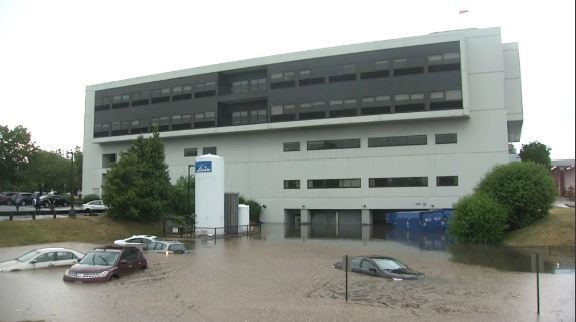One neighborhood of Norwood, Massachusetts, looked more like Class IV rapids Sunday afternoon when a powerful storm moved through and flooded the area.
It was the first Flash Flood Emergency issued by the National Weather Service in Boston since 2014 when Fall River saw significant flooding due to Tropical Storm Arthur.
Before Arthur, the only other emergency issued was in 2011 during Irene. This had been the first issue for the immediate Boston suburbs.
On Sunday, thunderstorms had developed during the afternoon. Not only were they slow-moving, but they also ended up "back building."
Back building is when thunderstorms regenerate on the backside. Instead of the thunderstorm moving through, it just sits and pours rain. In and around Norwood, three to inches of rain fell in nearly 90 minutes.
If you look at the FEMA flood map from 2012, it doesn't show a heightened flood risk, in fact, the area around the Norwood Hospital is termed, "area of minimal flood hazard."
Unfortunately, that doesn't mean a 0% chance.
Water travels by wait of gravity and it goes from high points to low points and at the lowest points it tends to pool.
Unfortunately, the Norwood Hospital parking lot and the area around the hospital is at a low point. Cottage Street, even if not visible with the naked eye, has a pretty significant slope to it – hence why it turned into rapids.
The Neponset River almost hit moderate flooding as well. It climbed 4 feet in a matter of minutes and if it wasn't for our dry spring this would have turned into a serious situation.
So why is this happening?
Unfortunately, the climate records only go back to the 1990s in Norwood, but a stone's throw away at Blue Hill, we have a data set that goes back to the 1800s.
The frequency of these heavy rainfall events (2 inches or more in 24 hours) has increased.
In the 1800s, we averaged one event per year, now we average three!
Norwood was incorporated in 1872. Yes, the public works department has been fixing and working on infrastructure, but the problem is the original drainage system was not built to handle this kind of water.
The price tag to fix the problem is likely not affordable in most communities



